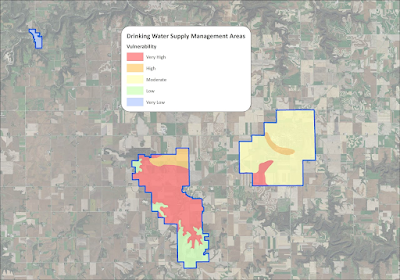By Kathleen Weessies
What happens when a broad-based discovery tool such as the BTAA Geoportal brings together datasets that had been created in isolation and places them side-by-side? Scholars experience unprecedented findability and access to datasets which in turn gives rise to new questions and research topics. In short, knowledge is advanced more broadly, more deeply and in a more timely manner.
For example, every municipality, county, and state government is charged with governing some aspect of the public drinking water supply. Every unit of government generates data of one kind or another documenting aspects of water management within its purview. Scholars studying topics such as aquifers, agriculture, contaminants such as e. Coli, or disaster mitigation draw on these public datasets to advance our collective knowledge. Each dataset is usually generated and maintained in isolation of other local and regional efforts.
In the BTAA Geoportal, scholars can use one search site to find drinking water-related datasets for multiple areas:
What happens when a broad-based discovery tool such as the BTAA Geoportal brings together datasets that had been created in isolation and places them side-by-side? Scholars experience unprecedented findability and access to datasets which in turn gives rise to new questions and research topics. In short, knowledge is advanced more broadly, more deeply and in a more timely manner.
For example, every municipality, county, and state government is charged with governing some aspect of the public drinking water supply. Every unit of government generates data of one kind or another documenting aspects of water management within its purview. Scholars studying topics such as aquifers, agriculture, contaminants such as e. Coli, or disaster mitigation draw on these public datasets to advance our collective knowledge. Each dataset is usually generated and maintained in isolation of other local and regional efforts.
In the BTAA Geoportal, scholars can use one search site to find drinking water-related datasets for multiple areas:
 |
| Drinking Water: Michigan This dataset shows the locations of drinking water at recreational facilities provided by the Michigan Department of Natural Resources |
 |
Public Drinking Water Advisory Locations: Ohio This dataset locates and provides details for drinking water advisories at Ohio public water systems |
 |
Drinking Water Supply Management Areas: Minnesota This dataset includes the drinking water supply management area boundaries and the vulnerability levels within each management area in Minnesota. |